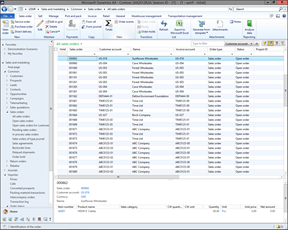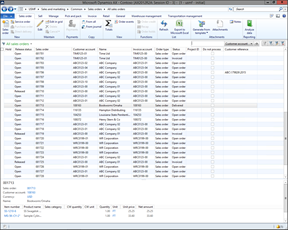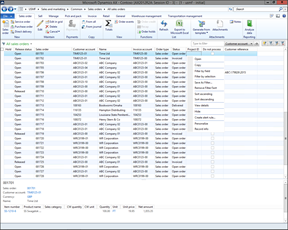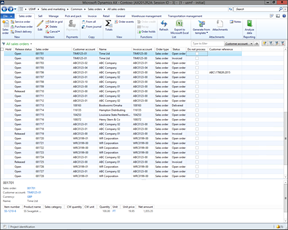Self Service Reporting For Users – Part 1: Using List Pages as User Reports
Posted by Author, Curator, Visually Impared Squirrel Literacy Advocate & Dynamics AX Technical Solution Professional (TSP) at Microsoft on
Having users perform their own reporting has been a dream on both sides of the organization. The IT group don’t particularly like creating reports for the users when they could be spending their time on cooler projects, and users don’t particularly like waiting for IT to create the reports that they need to track the data because it’s never quite what they wanted, and also takes so long to get (because of the first reason) that it’s usually out-of-date. If only there was a solution…
Well there is, because there are so many tools built into Dynamics AX and also the productivity tools like Excel and Word that the users can easily create their own reports themselves without having to get the IT group involved. Everybody wins!
In this series we will show you how the users can do just that, it’s so easy that they may not even realize that they are creating reports.
Using List Pages as User Reports
The first thing that we will highlight is that the Dynamics AX list pages are the best reporting options that is there for the user. The list pages can be rearranged, filtered, have fields added to them, sorted and a whole slew of other personalization options making it the perfect way to review data.
For example, if you open up the All Sales Orders list page then you will see all of the common information that the user may need in a report of open sales orders.

If the user needs to re-arrange any of the fields, then they can just drag and drop the fields around in the list page. For example, here we moved the Release Status to the left side of the list page.

If there are fields that the use does not need to see, then they can just right-mouse-click on the field and then select the Hide option from the context menu that pops up.

Then the field is hidden from the view.

Summary
If the users are just looking for a way to view data from Dynamics AX, then there is no reason why they should have to resort to having to create custom reports. All of the information is available on the list pages themselves and the user has the ability to even rearrange the data and also hide information that they are not interested in. I’s the ideal first line of attack when it comes to self-service reporting.
About The Author
Murray Fife is a Technical Solution Professional at Microsoft and Author of over 25 books on Microsoft Dynamics AX including the Bare Bones Configuration Guide Series which contains over 15 books that show novice users host to set up Dynamics AX using visual walkthroughs. These guides start off with the Financial modules of Dynamics AX and then progress through the Operational, Distribution, and then the more specialized modules like production, service management, and project accounting. You can find all of his books on Amazon (www.amazon.com/author/murrayfife) and also even more on the independent BSP (www.blindsquirrelpublishing.com) site.
Murray is also the curator of the Dynamics AX Companions (www.dynamicsaxcompanions.com) site which he built from the ground up as a resource for all of the Dynamics AX community where you can find walkthroughs and blueprints that he created since first being introduced to the Dynamics AX product.
Throughout his 25+ years of experience in the software industry he has worked in many different roles during his career, including as a developer, an implementation consultant, a trainer and a demo guy within the partner channel which gives him a great understanding of the requirements for both customers and partners perspective.
He is also a great supporter of the Dynamics AX community and has hosted scores webinars for the AX User Group (www.axug.com) and MS Dynamics World (www.msdynamicsworld.com), and has speaks at Microsoft Convergence and AXUG Summit conferences regularly.
Share this post
- 0 comment
- Tags: Uncategorized
0 comment
